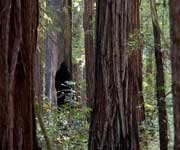Redwood National Park comprises a region of coastal mountains bordering the Pacific (to 930 m above sea level) north of San Francisco. It is covered with a magnificent forest of sequoia redwood trees, the tallest and most impressive trees in the world. The marine and land life are equally remarkable, in particular the sea lions, the bald eagle and the endangered California brown pelican. The park was established specifically to protect these trees, because it is only here and in Oregon that they now survive. Descendants of the giant evergreens that grew during the age of the dinosaurs, redwoods thrived in moist temperate regions of the world. They take 400 years to mature and some of the survivors are more than 2,000 years old. Their thick, sapless bark protects them from fire, but landslides and wind can topple old trees. Cultural landscapes reflect American Indian history.

Continent: North America
Country: United States of America
Category: Natural
Criterion: (VII)(IX)
Date of Inscription: 1980
Redwood Trees
The Indians used fallen redwood trees to build canoes and houses; commercial logging began during the gold rush era. Logging of redwoods continues and is debated by the timber industry and environmentalists. The trees stand as majestic reminders of the slow evolution of nature. The area transcends two distinctive physiographic environments: the coastline, and the mountains of the Coast Range.The park's 55 km coastline consists of steep, rocky cliffs broken by rolling slopes and broad sandy beaches. Gently rounded summits contrast with steep slopes and deeply incised streams. Bedrock is primarily highly deformed Cretaceous deep water marine sandstones, siltstones and shales. Lesser amounts of chert, volcanic greenstones and metamorphic rocks occur as blocks within the sedimentary rocks.
 |
| Redwood National Park Heritage |









No comments:
Post a Comment